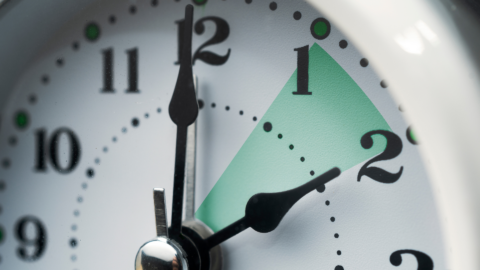Daylight Savings Time (DST) is a practice used to extend evening daylight hours during the warmer months. By setting clocks forward one hour in the spring, individuals can enjoy more daylight in the evening. This article delves into the multifaceted effects of DST on employees, shedding light on both the benefits and challenges it presents.
Benefits of Daylight Savings Time for Employees
Improved Mental Health
The practice of Daylight Savings Time (DST) contributes significantly to the mental well-being of employees. The extension of daylight hours into the evening aligns more closely with the average workday, allowing individuals to experience more natural light after work. This increase in daylight exposure is crucial for mental health, as it is known to enhance mood and decrease the prevalence of seasonal affective disorder (SAD). The natural light acts as a stimulant for the brain, improving serotonin levels, which in turn can elevate a person’s mood and overall sense of happiness. By mitigating the effects of SAD and enhancing general well-being, DST can contribute to a more positive and productive work environment.

Enhanced Productivity
The correlation between increased daylight exposure and employee productivity is well-documented. With DST extending daylight into the hours when most people are still awake, employees tend to have more energy and a better mood, factors that are directly linked to higher productivity and creativity. Natural light has been shown to improve concentration and cognitive performance, enabling employees to complete tasks more efficiently and come up with innovative solutions. This section explores the various studies that support these claims, highlighting how workplaces that make the most of natural daylight can see a notable improvement in their employees’ output and job satisfaction.
Challenges of Daylight Savings Time for Employees
Disruption of Sleep Patterns
Transitioning into and out of DST poses significant challenges to employees’ circadian rhythms, the natural internal processes that regulate the sleep-wake cycle. This disruption can lead to sleep disturbances, including difficulty falling asleep and staying asleep, which can have a knock-on effect on health and productivity. Sleep is foundational to cognitive function, emotional regulation, and overall health. Therefore, the disturbances caused by DST can lead to decreased productivity, increased errors, and a higher risk of accidents at work. This section delves into the science behind sleep patterns and offers insights into the broader implications of these disruptions for employee well-being.
Impact on Work-Life Balance
Adjusting to the time change necessitated by DST can also have a profound impact on employees’ work-life balance. The abrupt change can throw off personal schedules, affecting family time, social engagements, and personal downtime. For many, the adjustment period can lead to longer working hours and a blur between professional and personal life, especially in industries that demand early or late working hours. This section discusses the challenges employees face in maintaining a healthy work-life balance during the DST transitions and the potential long-term effects on their personal lives and job satisfaction.
Adapting to the Time Change
Strategies for Employers
Employers play a crucial role in helping their employees adjust to DST changes. By implementing flexible scheduling, employers can provide their workforce with the opportunity to adapt their start and end times to better suit their natural sleep cycles during the transition periods. Wellness programs that promote healthy sleep habits and stress management can also be beneficial. This section offers a guide for employers on creating a supportive environment that mitigates the negative impacts of DST, focusing on policies and programs that promote health and productivity.

Tips for Employees
For employees, adapting to DST involves personal adjustments to minimize the adverse effects on sleep patterns and overall well-being. Strategies such as gradually adjusting sleep schedules a week before the change, maximizing exposure to natural light during the day, and practicing good sleep hygiene can ease the transition. This part provides a comprehensive list of actionable tips for employees, emphasizing the importance of maintaining a healthy lifestyle that accommodates the time shift.
Health Impacts of Daylight Savings Time
Physical Health Concerns
DST’s influence extends beyond sleep and productivity, affecting physical health in several ways. Potential risks include an increase in heart attacks and accidents right after the transition. However, the benefits, such as more opportunities for physical activity in daylight hours, can also positively impact health. This section examines the dual nature of DST’s health implications, offering a nuanced perspective on its overall effects.
Psychological Well-being
The psychological impact of DST on employees is profound. While the additional daylight can improve mood and vitality, the initial adjustment period can be stressful and disorienting. This part delves into the psychological effects of DST, discussing both the positive and negative impacts on employees’ mental health and stress levels.
Technological Solutions to Mitigate DST Effects
Innovative Workplace Tools
With the advent of technology, there are now more tools than ever to help mitigate the negative effects of DST on employees. Smart lighting systems that mimic natural light patterns, productivity apps that adjust to changing sleep schedules, and wellness platforms that provide personalized health tips are just a few examples. This section introduces the latest technological solutions designed to support employees through DST transitions.
Personal Health and Productivity Apps
Numerous apps aim to improve sleep patterns and productivity during DST transitions. From sleep trackers that monitor rest quality to apps that provide customized wake-up light simulations, technology offers practical solutions for employees struggling with the time change. This part reviews the top apps in this space, highlighting how they can help individuals adjust more smoothly to DST.
Future of Daylight Savings Time
Legislative Changes
The future of DST is uncertain, with ongoing debates and legislative proposals aiming to end or permanently adopt DST. This section covers recent developments and potential policy changes, exploring how they could impact employees and workplaces across different regions.
Trends in Workplace Flexibility
As workplace norms continue to evolve, the relevance of DST is being reevaluated. The rise of remote work and flexible hours offers new ways to address the challenges posed by DST, potentially diminishing its impact on employees. This part discusses current trends in workplace flexibility and how they might shape the future of DST in the professional world.
Conclusion
The impact of Daylight Savings Time on employees encompasses a broad spectrum of benefits and challenges. By understanding and addressing these effects, both employers and employees can better navigate the transitions, fostering a healthier and more productive work environment.
Contact WorkSafe to find out how we can help your company today!
Working to keep you safe, healthy, and productive,

